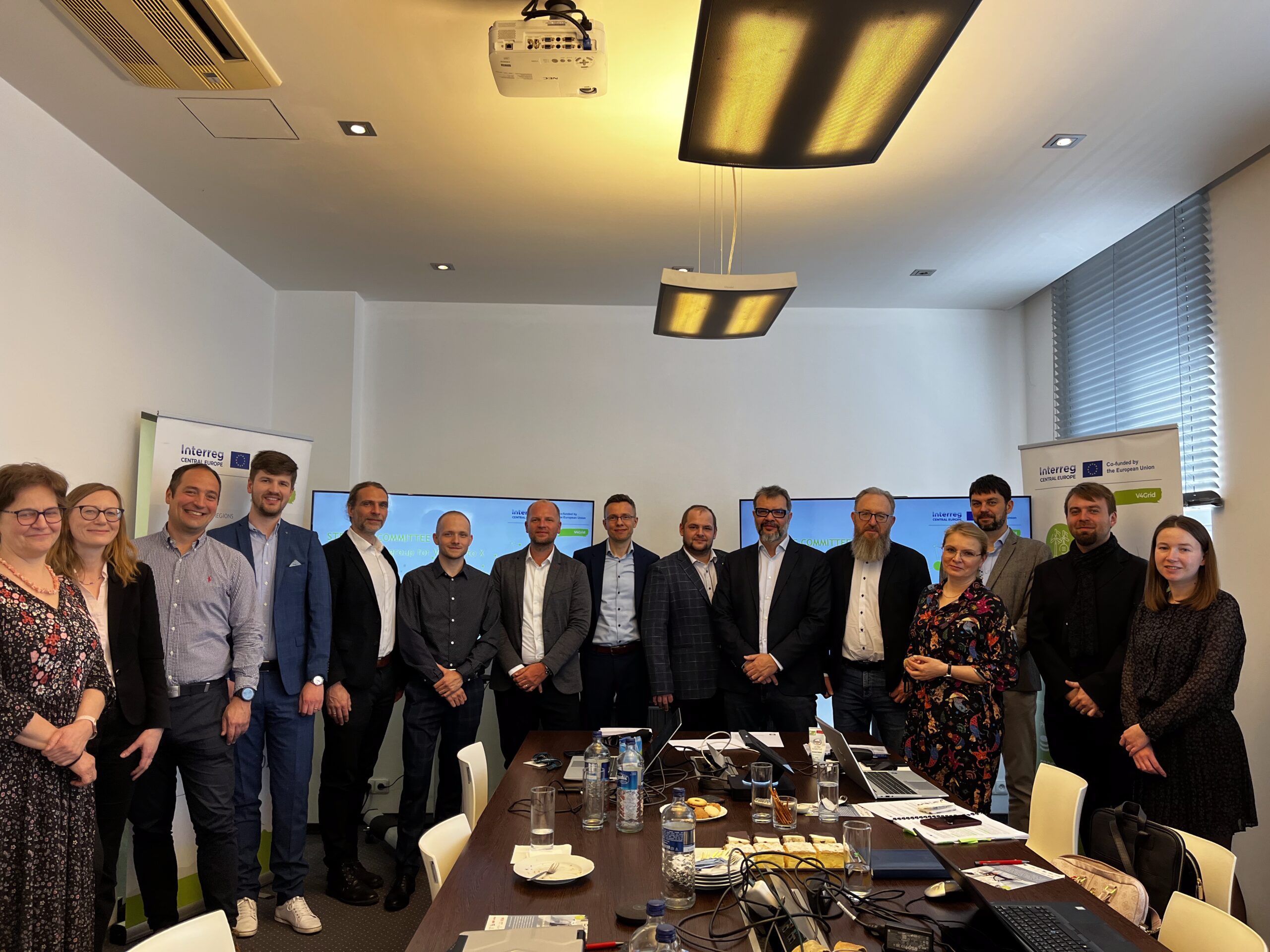The latest V4Grid consortium meeting in Bratislava brought together all 11 partners from 4 countries, providing the perfect opportunity to meet in person and efficiently move our efforts forward. Thanks to our lead partner, ZSE, we were able to dive into productive discussions, brainstorm fresh ideas, and strengthen our collaboration. We reflected on lessons learned from the past period, focused on the next steps, and explored the best strategies to bring V2X technology to life. Lessons Learned During this meeting, we took time to reflect on the lessons we’ve gathered so far—whether it was addressing the technical requirements, ensuring the connection between multiple fields critical to making bi-directional charging a reality, or recognizing the importance of clear and effective communication within the consortium and with our controllers. After reviewing the first phase, we’re now focused on tackling these challenges and refining our approach as we move forward. Connecting Our Shared Knowledge One of the most valuable aspects of this consortium meeting was the chance to unite our expertise. Each partner brings something unique to the table: insights on hardware criticalities, software solutions, data management, AI or machine learning, and knowledge of the evolving markets for PV, EVs, and energy. By sharing this expertise, we’re building a strong foundation for the V4Grid project. Creating a Clear Action Plan With our shared knowledge in hand, we left the meeting with a clear “to-do list” to propel things forward. Key tasks include selecting the right hardware, gathering specific data to understand the energy flow dynamics across various buildings, and exploring available market options. Each step we take is an essential piece of the puzzle in making V2X technology a reality. The Power of Face-to-Face Collaboration Meeting in person truly made a difference. The opportunity to discuss the challenges ahead, the active involvement of every partner, and the dynamic exchanges of ideas and potential solutions elevated our discussions to another level. This face-to-face collaboration deepened our understanding and made our collective goals feel more attainable. Challenges Ahead As we continue on our journey, the real challenge lies in connecting each field into a comprehensive solution. We need to integrate cutting-edge chargers with the right software that can unlock their full potential and, most importantly, be compatible with EVs. But it doesn’t stop there — we also need to push the boundaries of innovation, as this technology is still ahead of the current market in Central Europe; it needs our drive to make change happen. The real issue lies in overcoming the gaps between hardware, software, and regulatory shifts, and making these pieces work together to prepare for a future of flexibility with bi-directional charging.
Manage Cookie Consent
To provide the best experiences, we use technologies like cookies to store and/or access device information. Consenting to these technologies will allow us to process data such as browsing behavior or unique IDs on this site. Not consenting or withdrawing consent, may adversely affect certain features and functions.
Functional Always active
The technical storage or access is strictly necessary for the legitimate purpose of enabling the use of a specific service explicitly requested by the subscriber or user, or for the sole purpose of carrying out the transmission of a communication over an electronic communications network.
Preferences
The technical storage or access is necessary for the legitimate purpose of storing preferences that are not requested by the subscriber or user.
Statistics
The technical storage or access that is used exclusively for statistical purposes.
The technical storage or access that is used exclusively for anonymous statistical purposes. Without a subpoena, voluntary compliance on the part of your Internet Service Provider, or additional records from a third party, information stored or retrieved for this purpose alone cannot usually be used to identify you.
Marketing
The technical storage or access is required to create user profiles to send advertising, or to track the user on a website or across several websites for similar marketing purposes.
